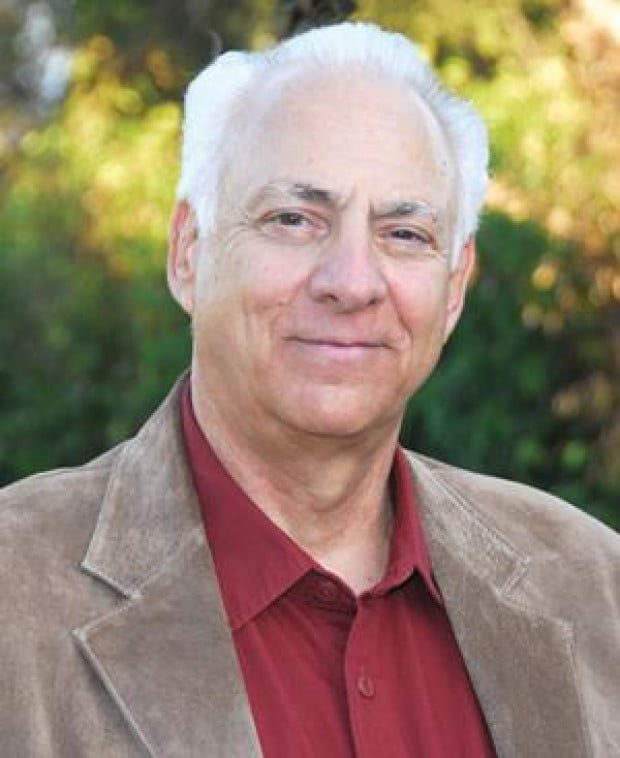
Mayor Pro Tem Lou La Monte will take over as the next mayor of Malibu on Monday at the City Council’s regular meeting at city hall. La Monte succeeds Laura Rosenthal, an education activist with whom he was elected to the council in the 2010 municipal elections. Under Malibu’s council-manager form of government, the position of mayor is held on a rotating basis so that each city council member holds the position for roughly 9 and a half months during their four-year terms.
La Monte, 70, is a television producer and father of three who moved to Malibu in 1992 with his wife Laraine. He served on the city’s public works commission, as president of the Big Rock Mesa Property Owners Association and on the task force to develop a view protection/restoration ordinance. In 2010 he was elected to the City Council, finishing second to Laura Rosenthal with 1,235 votes.
During that election, La Monte ran on a platform of improving safety on Pacific Coast Highway, eliminating any pollution the city was responsible for contributing to its watershed and passing a “fair, balanced” view ordinance.
In a telephone interview Monday, La Monte said he plans to continue to focus on those issues when he takes the reins as mayor, as well as advocating for newer ones that have arisen since he was elected to the council. Those include exploring a separate Malibu school district, passing legislation to stop the clustering of drug rehabilitation centers and finding a way to retire vacant commercial property in the Civic Center area.
His top priority remains improving safety on Pacific Coast Highway. La Monte last week flew to Sacramento with Rosenthal and City Manager Jim Thorsen to press for funding for what he called “urgent safety projects on PCH.”
“I think finally they’re taking our issues seriously,” La Monte said. “What I plan to do is continue to remind them of the urgency of what needs to be done here.”
Chief among the safety goals is reducing the amount of congestion due to parking on busy areas of the highway.
“I’d like to partner with Caltrans to go to the [California] Coastal Commission to prevent parking on the most dangerous parts of the PCH, like Paradise Cove,” said La Monte, who added he had already spoken to local Caltrans officials about the idea and hoped to set up a meeting with the Coastal Commission at some point.
La Monte is also still concerned about the city’s responsibilities concerning pollution in its watershed. He said Malibu is currently seeking what is called a “natural sources exclusion” for newly adjusted water quality standards that are in the process of being approved by the regional and state water resources control boards, which set local and statewide policy for water-related issues. The standards, called the maximum daily loads (TMDLs), are calculations of the maximum amount of a pollutant that a waterbody can receive and still meet water quality standards, according to the U.S. Environmental Protection Agency.
Under the new standards, cities would be required to keep water pollutant levels below a specified limit. La Monte said the limits would be impossible to comply with, but would open the city to lawsuits unless it were able to receive an exception.
La Monte said there are certain natural factors that contribute to pollution in Malibu’s watershed, such as a rock formation east of the 101 freeway that is putting chemical deposits in the water. Malibu and 62 other cities are currently fighting for a natural sources exclusion to the TMDLs, and La Monte said that would be a point of emphasis for him as mayor.
“These are natural things that we have no control over. And that’s what we’re trying to eliminate from these TMDLs,” La Monte said. “My feeling is that as long as we’re doing the best possible practices that we shouldn’t be held responsible for things that just float through our cities that are just naturally there.”
Another goal of La Monte’s is to team up with other coastal cities to support legislation banning the clustering of drug and alcohol rehabilitation centers. La Monte said the centers overburden infrastructure, are largely out of the regulation of city governments and are destructive to residential neighborhoods.
“There are a lot of other cities that have these issues,” La Monte said, mentioning Redondo Beach as an example. “And if we go as a group as opposed to just one city doing it, I think we have a really good shot at getting this done.”
Another pair of issues that were not originally on La Monte’s radar when he joined the council in 2010 is the potential for an independent Malibu school district and the recent ad hoc committee formed by the council to discuss a public funding measure to buy and retire vacant commercial land in the Civic Center.
“I’m excited to see if I can help make a difference,” La Monte said of becoming mayor. “It’s a lot more work, and that’s fine with me.”